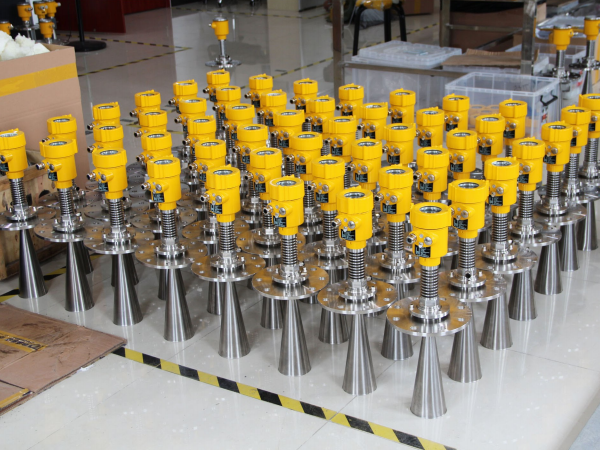Radar level meter is an advanced level measuring instrument, which is widely used in various industries. However, in practical applications, sometimes there will be problems with level display fluctuations, which will affect the accuracy and stability of the measurement.
This article will introduce how to solve the problem of level display fluctuations in radar level meter.

Radar level meters measure liquid level height by emitting microwave signals and receiving their reflected waves. When the liquid level changes, the propagation time of the reflected wave will also change accordingly, and the liquid level height can be calculated. Therefore, the fluctuation of liquid level display may be caused by many factors, such as liquid surface fluctuations, bubbles, steam, etc.
In response to these problems, we can take the following measures to solve them:
1. Choose a suitable installation location: In order to avoid the influence of the fluctuation of the liquid surface on the measurement results, the radar level meter should be installed as far away from the feed port and the discharge port as possible. In addition, the radar level meter should be installed in a place with strong vibration to avoid affecting the measurement accuracy.
2. Adjust parameter settings: Radar level meters usually have some adjustable parameters, such as dead zone settings, filter settings, etc. By reasonably adjusting these parameters, the influence of external factors on the measurement results can be reduced. For example, the dead zone setting can be appropriately increased to reduce the influence of liquid surface fluctuations on the measurement results; the filter setting can also be adjusted to eliminate the influence of factors such as bubbles and steam.
3. Regular maintenance and calibration: In order to ensure the accuracy and stability of the radar level meter, it should be maintained and calibrated regularly. This includes cleaning the antenna, checking the cable connection, replacing damaged parts, etc. At the same time, zero point and range calibration should be performed regularly to ensure the accuracy of the measurement results.

4. Use other auxiliary equipment: In some special cases, other auxiliary equipment can be used to solve the problem of level display fluctuations. For example, a still water well can be installed near the radar level gauge to reduce the impact of liquid surface fluctuations on the measurement results; equipment such as waveguides or shielding covers can also be used to eliminate interference from factors such as bubbles and steam.
5. Choose the right radar level gauge model: Different types of radar level gauges are suitable for different application scenarios. When choosing a radar level gauge, you should choose the right model according to actual needs.
For example, for liquids that are prone to foaming, you can choose a radar level gauge with strong anti-foaming ability; for applications in high temperature and high pressure environments, you can choose a radar level gauge with high temperature and pressure resistance.

The key to solving the problem of fluctuations in the liquid level display of radar level gauges is to find the root cause of the problem and take appropriate measures to solve it.
This problem can be effectively solved by selecting a suitable installation location, adjusting parameter settings, regular maintenance and calibration, using other auxiliary equipment, and selecting a suitable radar level gauge model, thereby improving the accuracy and stability of the radar level gauge.
